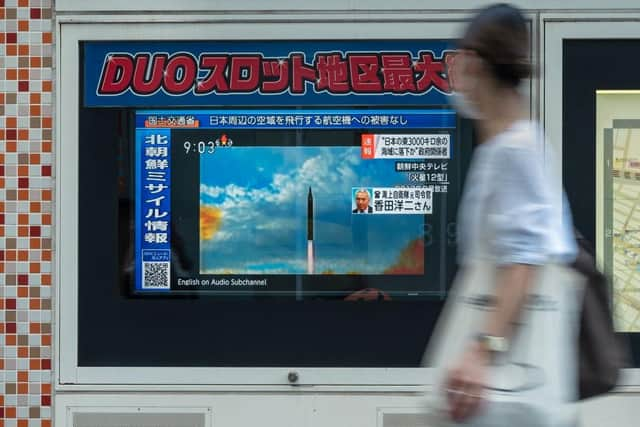What is the J-Alarm and how the Japanese learned of a missile fired by North Korea
Known as the J-Alarm, the sound, which blared through phones, smart speakers and on the streets of Hokkaido, Aomori and Tokyo’s islands, signalled that a missile had been fired that could land on Japanese ground.
"North Korea appears to have launched a missile”, warned an accompanying message, sent to all mobile phone users in the same way that Scottish citizens were told of the first Covid-19 lockdown in March 2020. It was 7:20am and Japanese citizens quickly responded.
Advertisement
Hide AdAdvertisement
Hide AdOne woman, Kazuko Ebina, told Japanese newspaper the Asahi Shimbun that she didn’t know what to do. Advice instructed citizens to take cover underground where possible, but she knew the nearest route underground was a five-minute walk away – and she didn’t know if she had time.


The missile, launched by North Korea, landed in the Pacific without incident, seven minutes after it was launched. It had, however, flown about 2,800 miles, the longest distance ever travelled by a North Korean weapon.
As many in her position would, Ms Ebina’s thoughts turned to “what if”. She began to worry about what the consequences would have been if it had landed on a nuclear fuel reprocessing plant in Aomori’s Rokkasho village.
“If the missile falls there,” she worried, “it would be a disaster, not just in Aomori, but across Japan.”
Experts believe the missile was fired by North Korea as a warning shot, to get the attention of South Korea and the US – who responded by holding joint bombing drills. Pyongyang has ramped up testing of its weapons in recent weeks, bringing with it an escalation of tensions between the authoritarian, closed nation and the West.
North Korea’s main beef remains with South Korea – and the wider Western world. Firing over or past Japan allows North Korea’s scientists to test missiles under more realistic conditions, rather than being a direct threat to Tokyo. The Japanese government is looking at increasing its defence capabilities in a bid to take control of its own safety.
Yet the reality of what must have felt like a near miss for many Japanese citizens will leave an unsettling feeling of foreboding.
Comments
Want to join the conversation? Please or to comment on this article.
